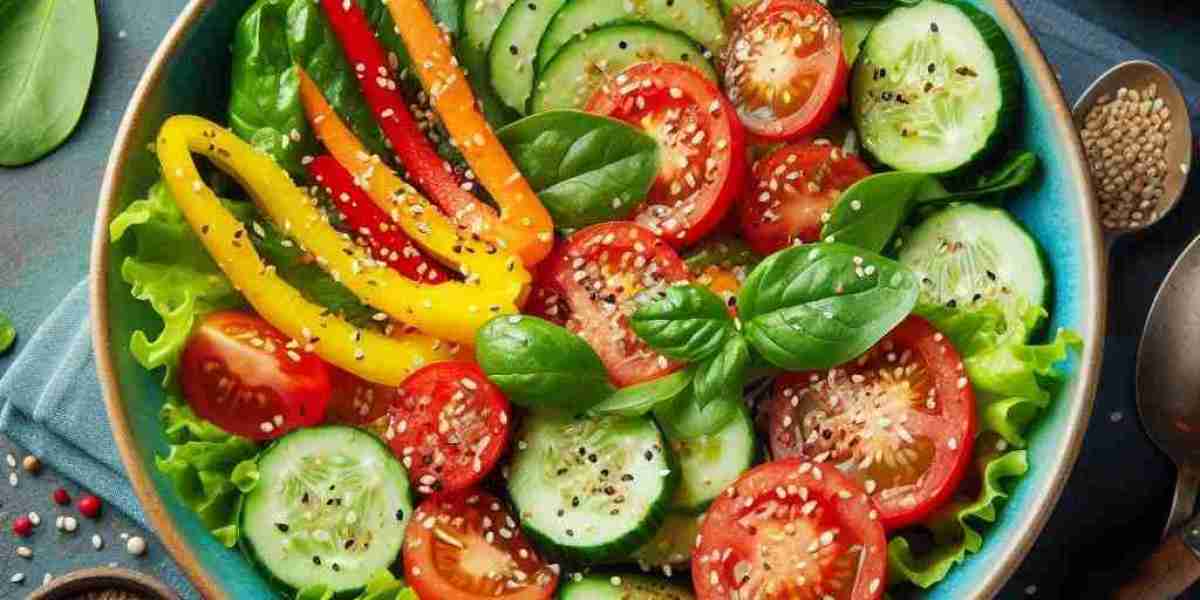In today’s fast-paced world, maintaining a healthy diet can often feel like a challenge. With so many options and conflicting advice, knowing what to eat to stay healthy can be overwhelming. However, adopting a diet rich in nutritious foods is one of the most important steps you can take for your overall well-being. In this blog, we’ll explore the principles of healthy eating and highlight some of the best foods to include in your diet for optimal health.
Understanding Healthy Eating
Healthy eating is about more than just counting calories or cutting out certain foods. It’s about nourishing your body with a balanced mix of nutrients that provide the energy, vitamins, and minerals you need to thrive. A healthy diet typically includes a variety of foods from all food groups, emphasizing whole, unprocessed options.
Key Principles of Healthy Eating:
- Balance: Ensure your diet includes a variety of foods from different food groups—fruits, vegetables, whole grains, lean proteins, and healthy fats.
- Moderation: While no food is off-limits, it’s important to enjoy treats in moderation. Portion control and mindful eating can help you avoid overindulgence.
- Variety: Eating a wide range of foods ensures you get all the necessary nutrients. Experiment with different fruits, vegetables, grains, and proteins to keep your diet exciting and nutritious.
- Hydration: Don’t forget the importance of water. Staying hydrated is crucial for your body’s functions, from digestion to temperature regulation.
Top Healthy Foods to Include in Your Diet
Incorporating a variety of nutrient-dense foods into your diet can help you achieve better health and prevent chronic diseases. Here are some of the healthiest foods you can eat:
1. Leafy Greens
Leafy green vegetables like spinach, kale, and Swiss chard are packed with vitamins A, C, and K, as well as fiber, iron, and calcium. These veggies are low in calories but high in nutrients, making them a must-have in any healthy diet.
How to Enjoy:
- Add spinach to your morning smoothie for a nutrient boost.
- Toss kale into salads or sauté it with garlic as a side dish.
- Use Swiss chard in soups or as a wrap for your favorite sandwich fillings.
2. Berries
Berries like blueberries, strawberries, and raspberries are antioxidant powerhouses. They’re rich in vitamins, fiber, and phytonutrients that help protect your body against inflammation and chronic diseases.
How to Enjoy:
- Sprinkle fresh berries on your cereal or yogurt.
- Blend them into smoothies or use them as a topping for oatmeal.
- Enjoy them as a sweet, satisfying snack on their own.
3. Whole Grains
Whole grains like quinoa, brown rice, and oats are excellent sources of fiber, which aids digestion and helps regulate blood sugar levels. They also contain essential nutrients like B vitamins, iron, and magnesium.
How to Enjoy:
- Start your day with a bowl of oatmeal topped with nuts and fruit.
- Use quinoa as a base for salads or as a side dish with dinner.
- Swap out white rice for brown rice in your favorite recipes.
4. Nuts and Seeds
Nuts and seeds, including almonds, walnuts, chia seeds, and flaxseeds, are packed with healthy fats, protein, and fiber. They’re also rich in omega-3 fatty acids, which are important for heart health.
How to Enjoy:
- Snack on a handful of mixed nuts during the day.
- Add chia seeds or flaxseeds to your smoothies, yogurt, or oatmeal.
- Use almond butter as a spread on whole-grain toast or as a dip for fruit.
5. Fatty Fish
Fatty fish like salmon, mackerel, and sardines are rich in omega-3 fatty acids, which support brain and heart health. They’re also a great source of high-quality protein, vitamins D and B12, and minerals like selenium.
How to Enjoy:
- Grill or bake salmon with your favorite herbs and lemon.
- Add sardines to salads or enjoy them on whole-grain crackers.
- Make a fish taco with grilled mackerel, avocado, and salsa.
6. Legumes
Legumes, such as beans, lentils, and chickpeas, are excellent sources of plant-based protein, fiber, and essential nutrients like iron and folate. They are versatile, affordable, and can be used in a variety of dishes.
How to Enjoy:
- Make a hearty lentil soup or stew.
- Add chickpeas to salads or roast them for a crunchy snack.
- Use black beans in tacos, burritos, or as a base for veggie burgers.
7. Yogurt and Fermented Foods
Yogurt, kefir, and other fermented foods like sauerkraut and kimchi are rich in probiotics, which support a healthy gut. A healthy gut is crucial for digestion, immune function, and even mental health.
How to Enjoy:
- Have yogurt with fruit and a sprinkle of nuts for breakfast or a snack.
- Add kimchi or sauerkraut to sandwiches, salads, or grain bowls.
- Drink kefir on its own or use it as a base for smoothies.
8. Avocado
Avocados are packed with healthy monounsaturated fats, which are good for your heart. They’re also high in fiber, potassium, and vitamins C, E, and K.
How to Enjoy:
- Spread avocado on whole-grain toast and top with a poached egg.
- Add slices of avocado to salads, sandwiches, or tacos.
- Make guacamole as a healthy dip for veggies or whole-grain chips.
9. Sweet Potatoes
Sweet potatoes are a nutrient-dense food rich in vitamins A and C, fiber, and potassium. They have a naturally sweet flavor and are an excellent alternative to regular potatoes.
How to Enjoy:
- Bake or roast sweet potatoes as a side dish.
- Mash them with a bit of cinnamon and honey for a healthy dessert.
- Slice and bake them into sweet potato fries.
10. Eggs
Eggs are a great source of high-quality protein and contain essential nutrients like vitamins B12, D, and choline. Despite past concerns, eggs are now recognized as a healthy food that can be part of a balanced diet.
How to Enjoy:
- Start your day with a veggie-packed omelet.
- Hard-boil eggs for a convenient and portable snack.
- Add poached or fried eggs to salads or grain bowls.
Tips for Maintaining a Healthy Diet
Adopting a healthy diet is easier than you might think. Here are some practical tips to help you make nutritious choices every day:
- Plan Your Meals: Planning your meals in advance can help you make healthier choices and avoid last-minute temptations.
- Read Labels: Understanding nutrition labels can help you choose foods that are lower in added sugars, unhealthy fats, and sodium.
- Cook at Home: Preparing meals at home allows you to control the ingredients and portion sizes, making it easier to eat healthily.
- Practice Mindful Eating: Pay attention to your body’s hunger and fullness cues, and savor each bite to avoid overeating.
Conclusion
Healthy eating is all about balance, variety, and moderation. By incorporating a wide range of nutrient-dense foods into your diet, you can nourish your body, boost your energy levels, and reduce your risk of chronic diseases. Start small by making gradual changes to your diet, and over time, these healthy habits will become second nature. Remember, the goal is not to be perfect, but to make better choices that support your overall well-being. With the right foods and a mindful approach to eating, you can enjoy a healthier, happier life.









